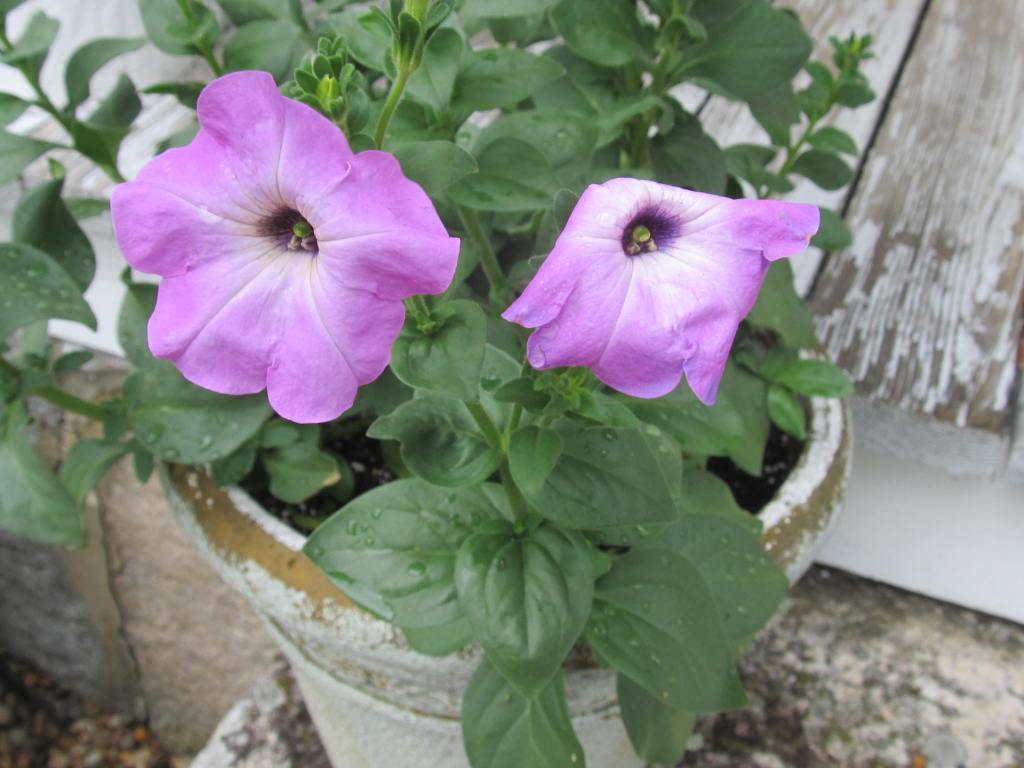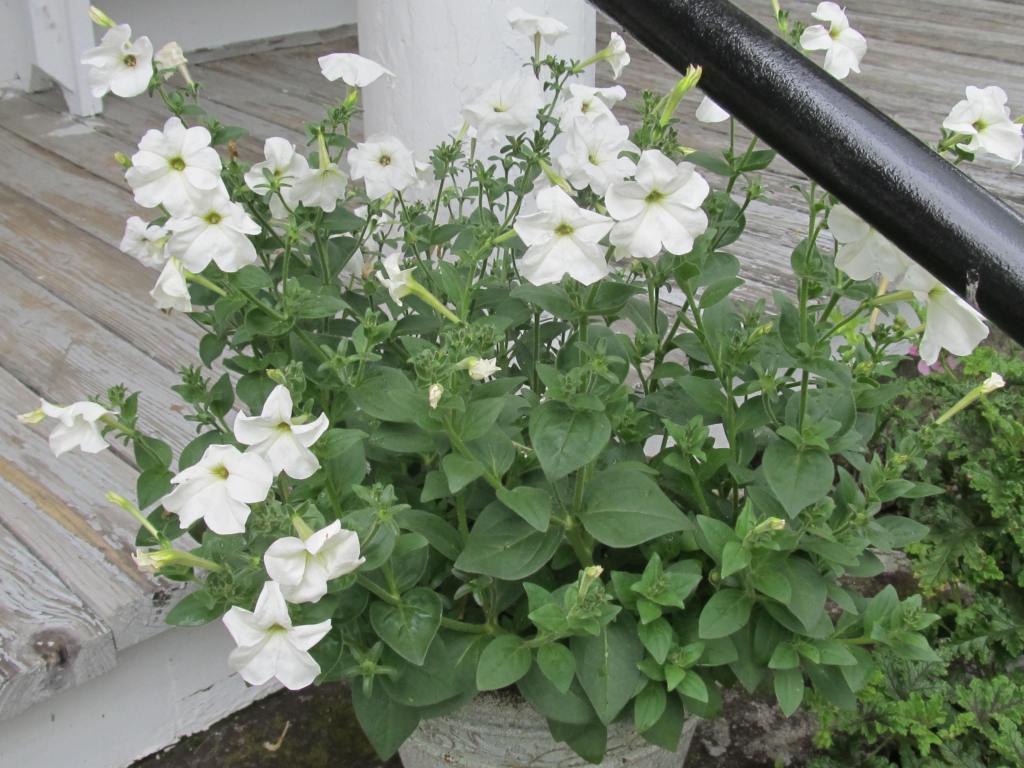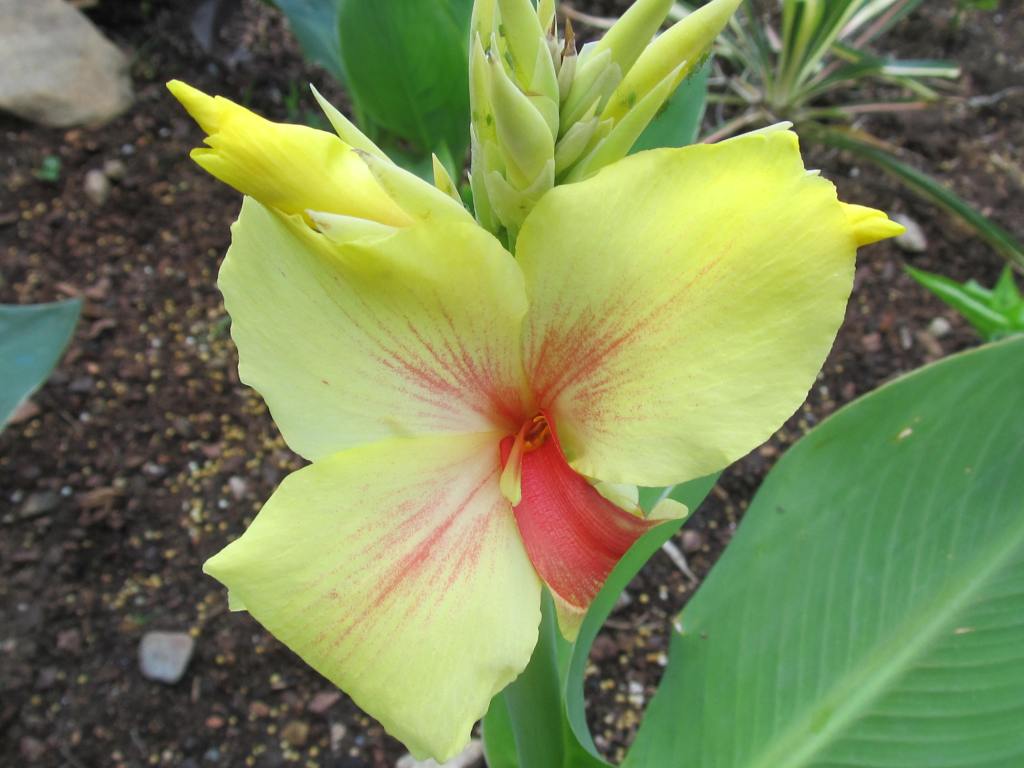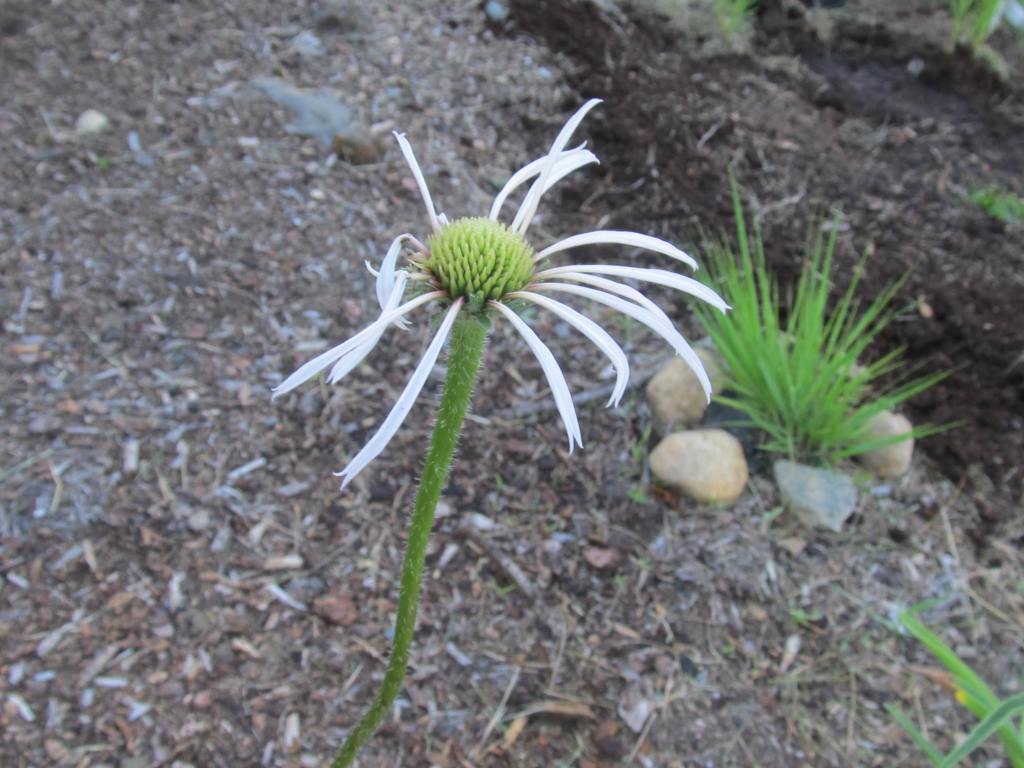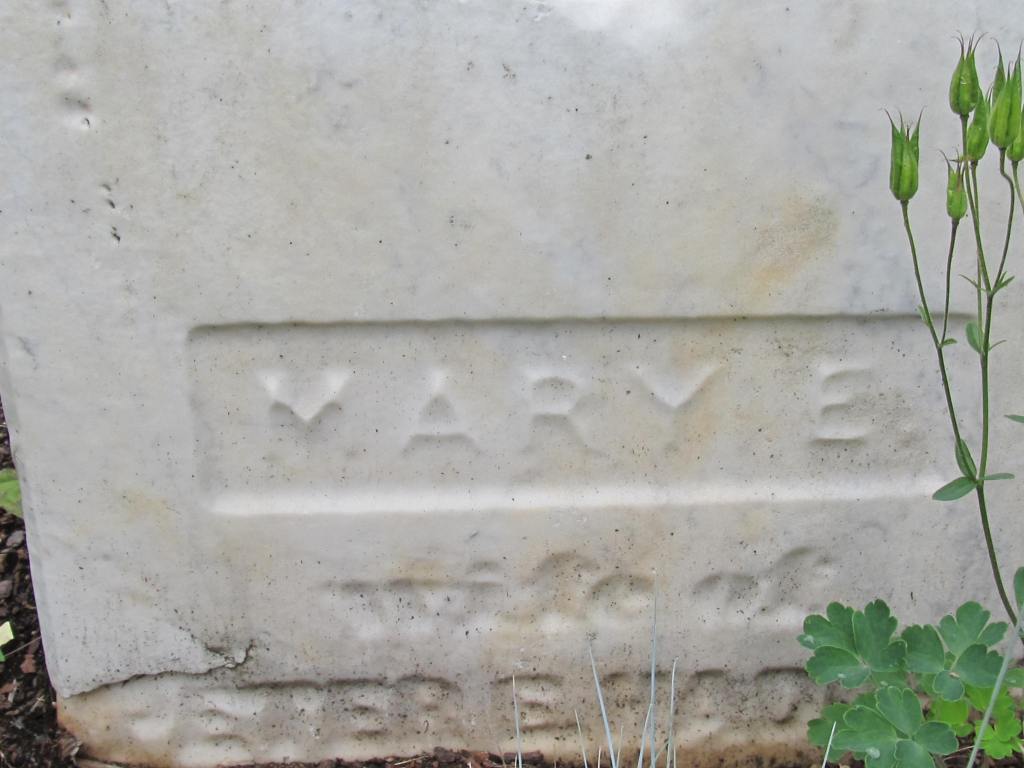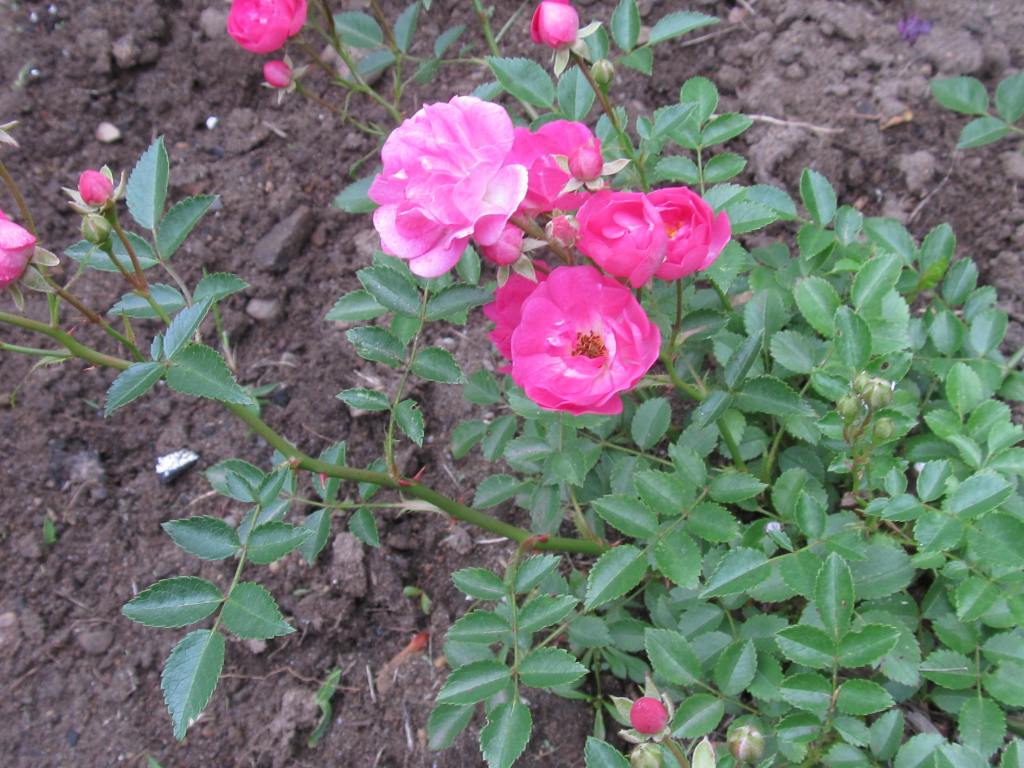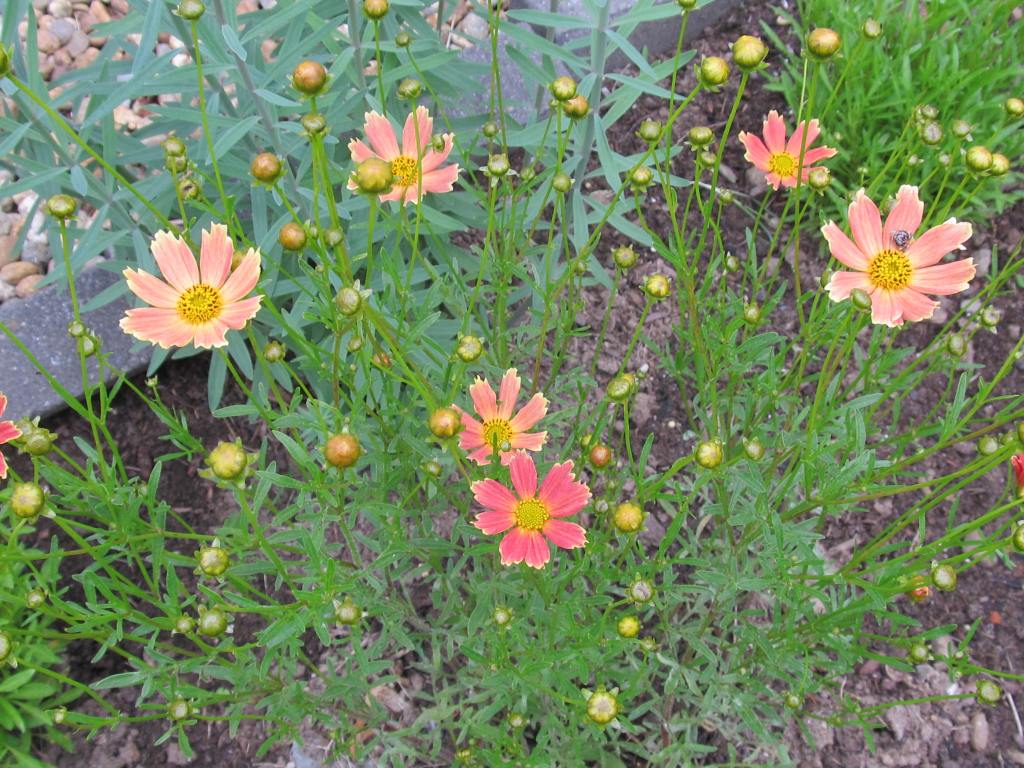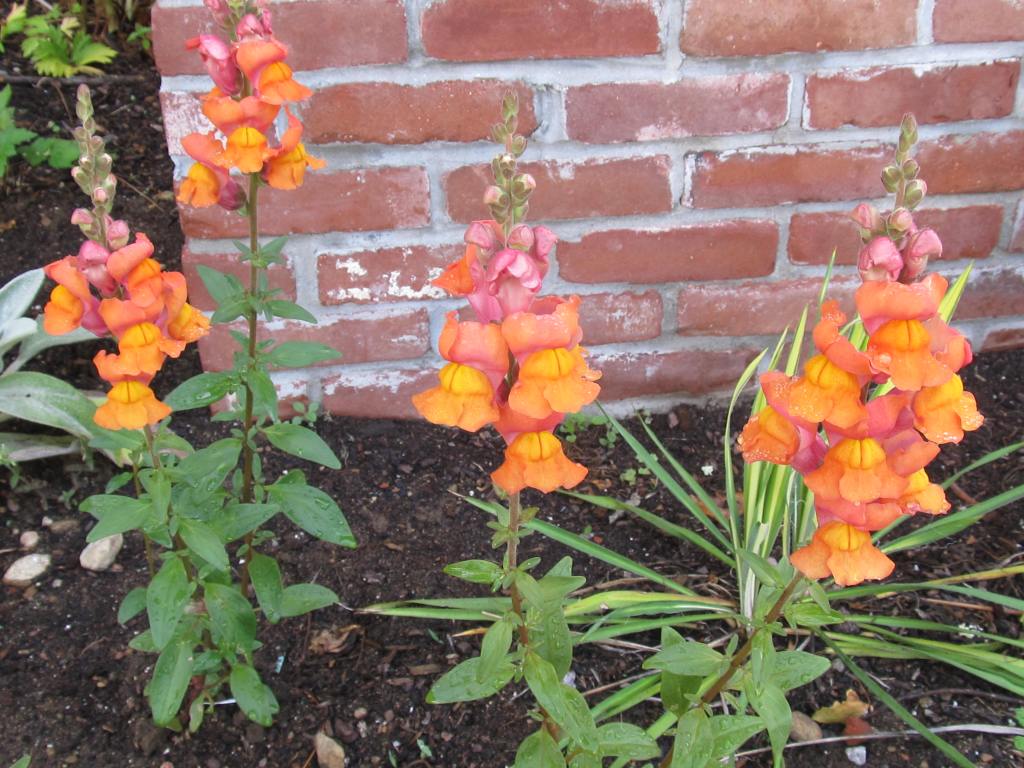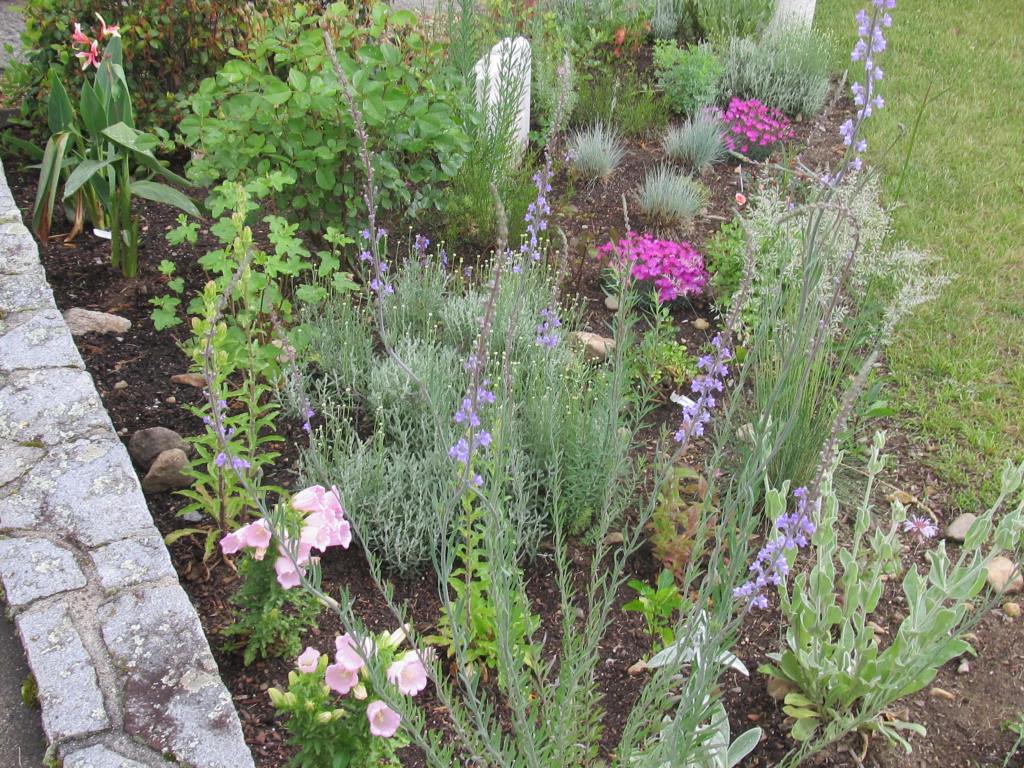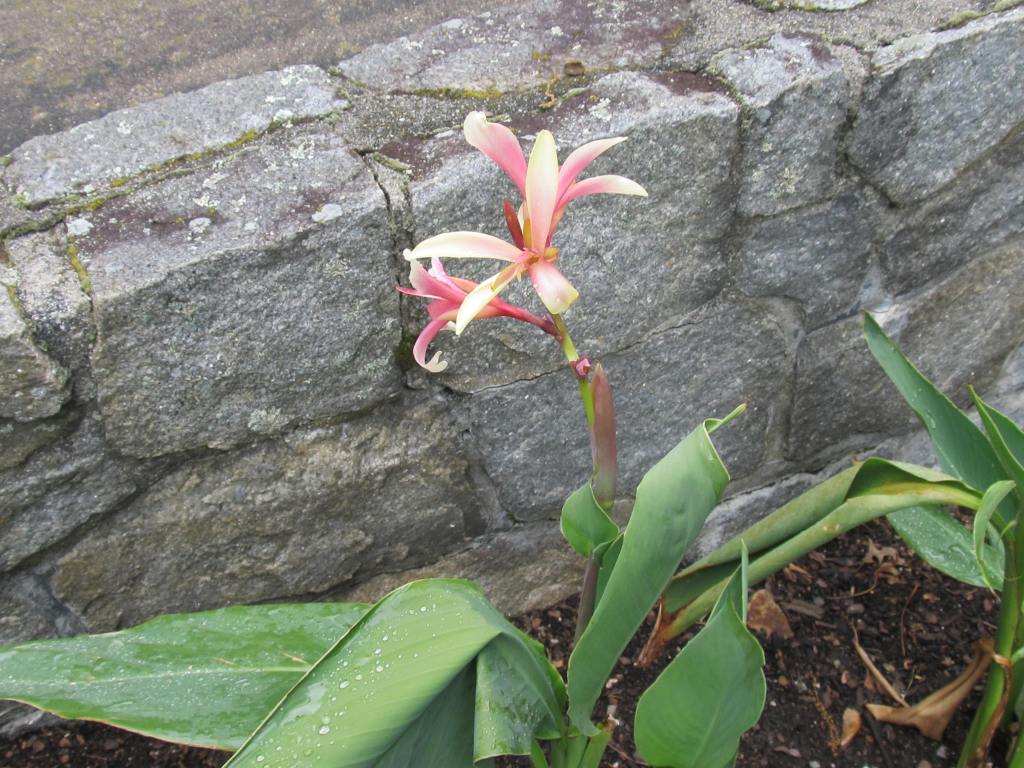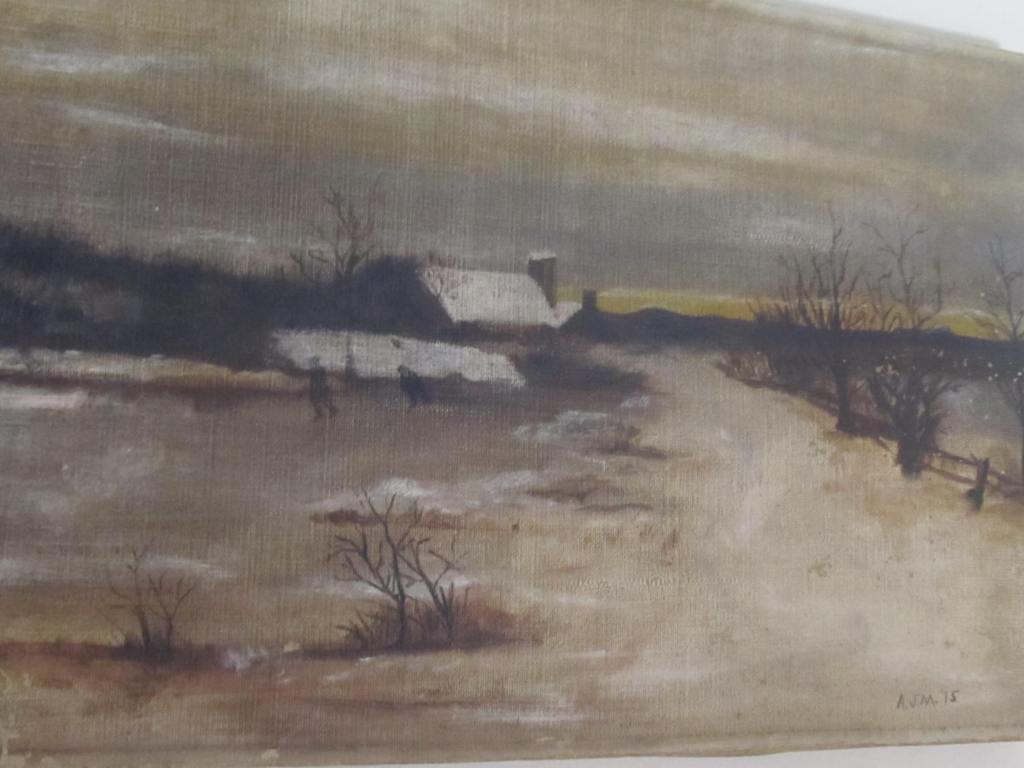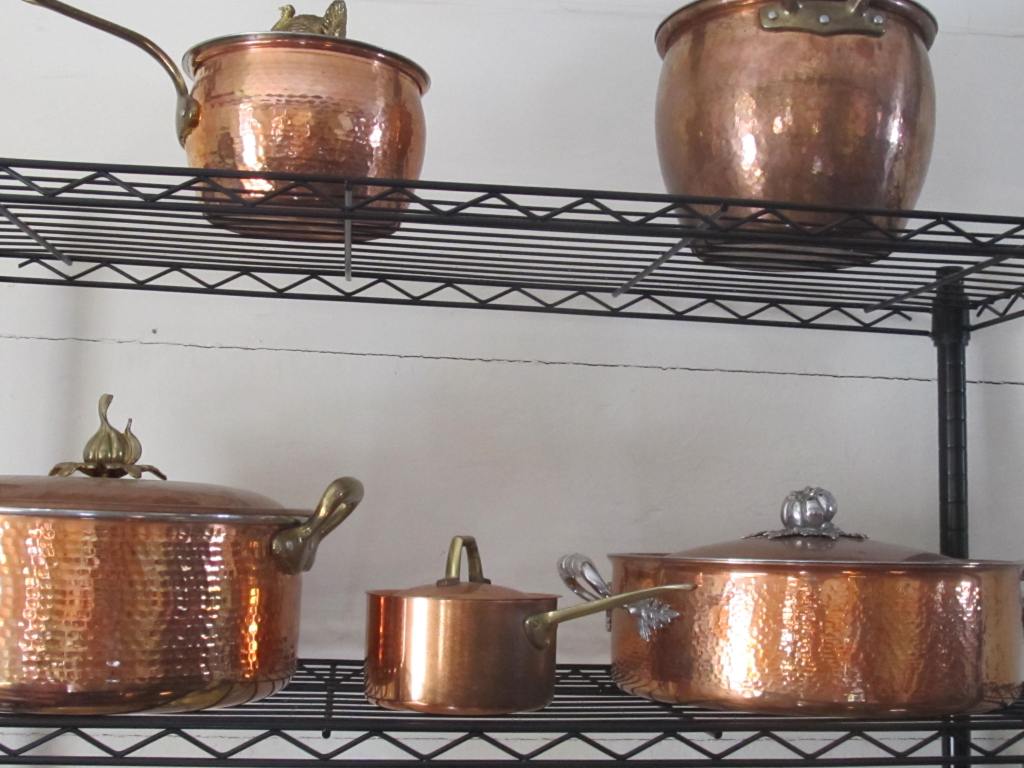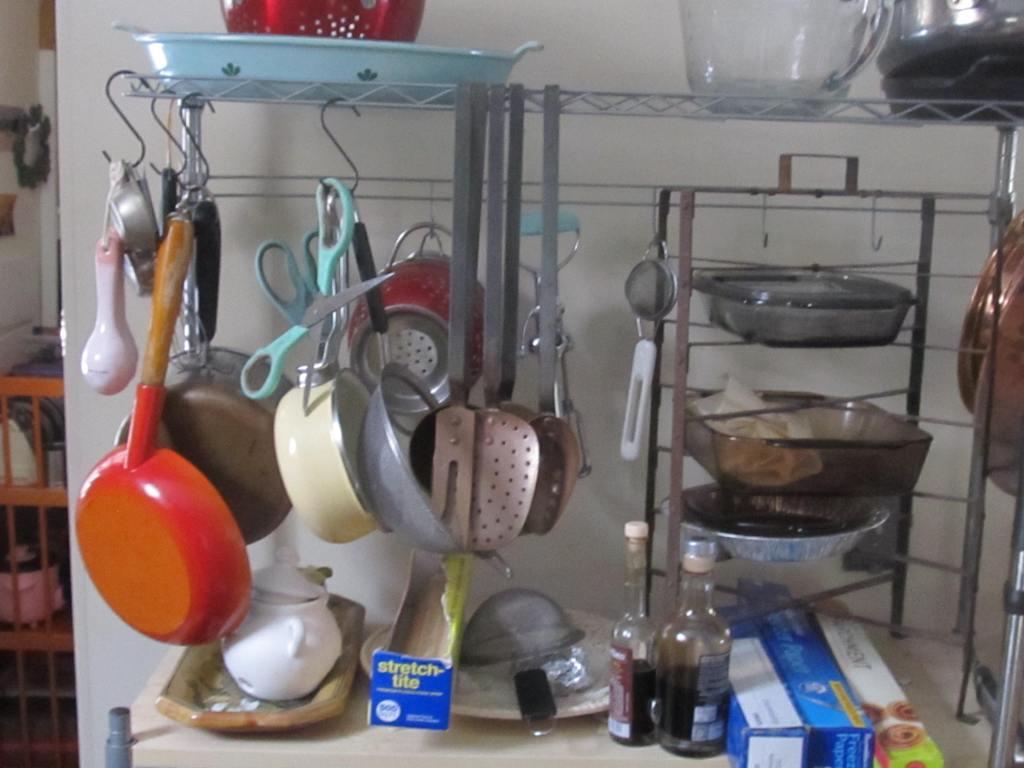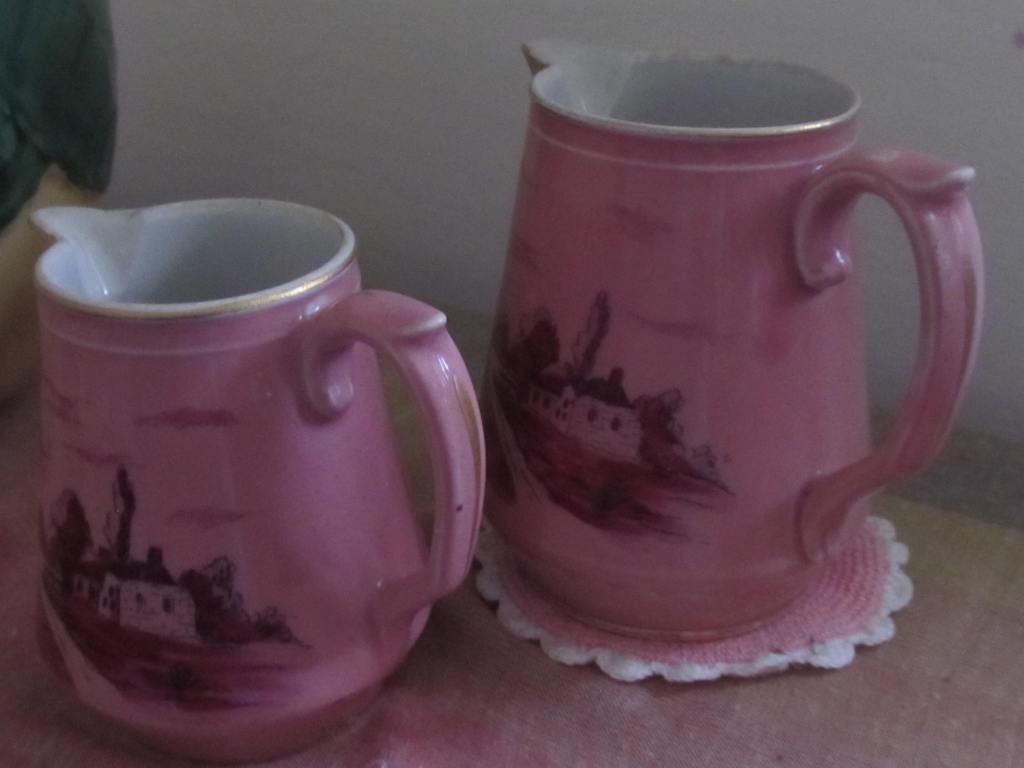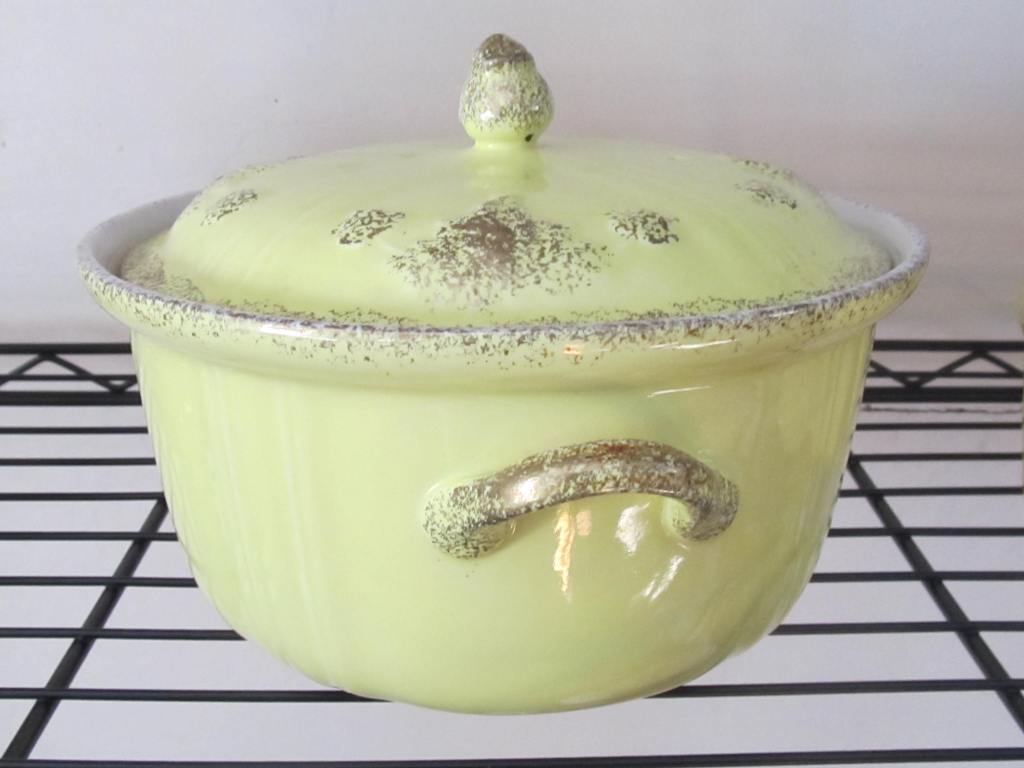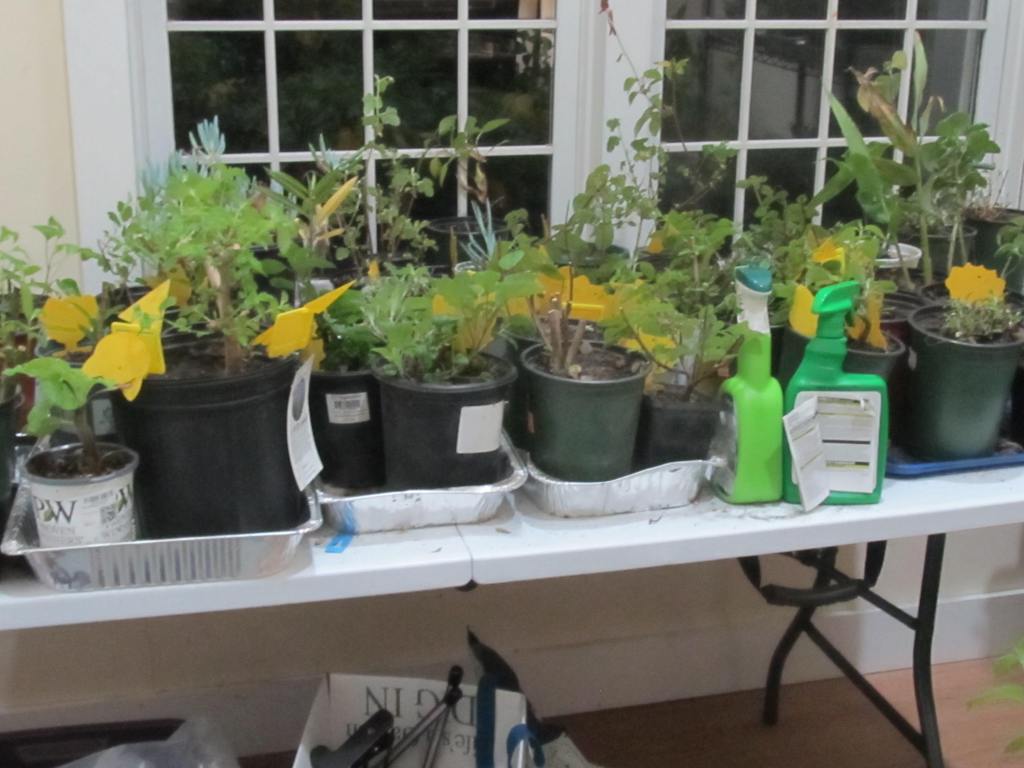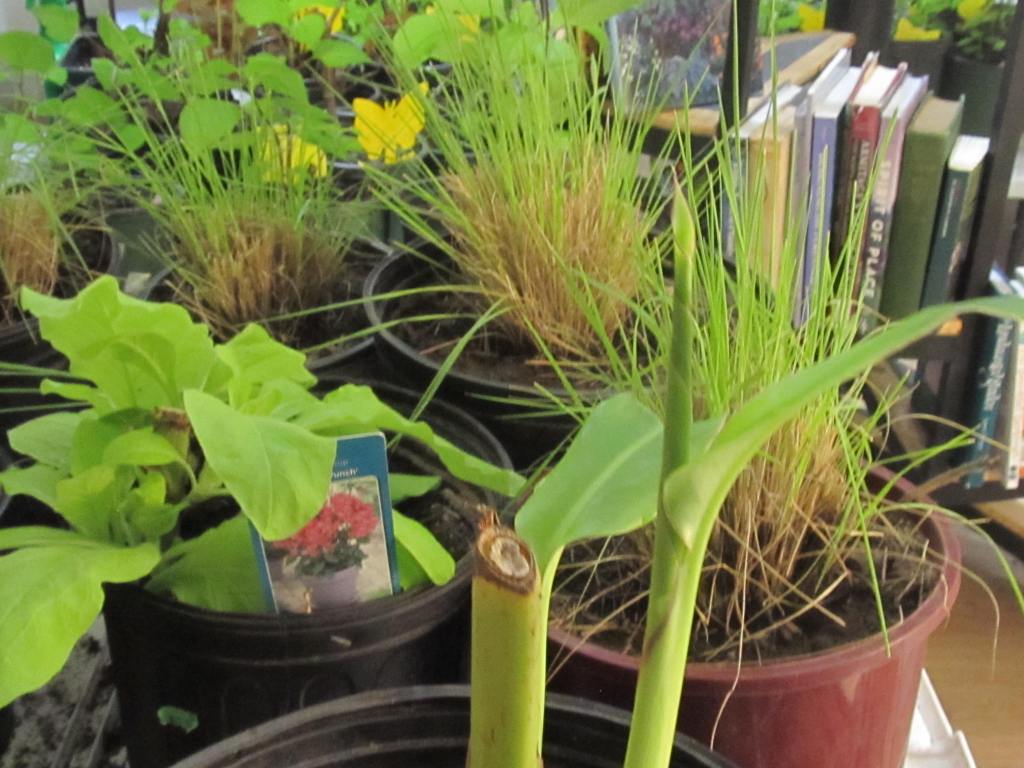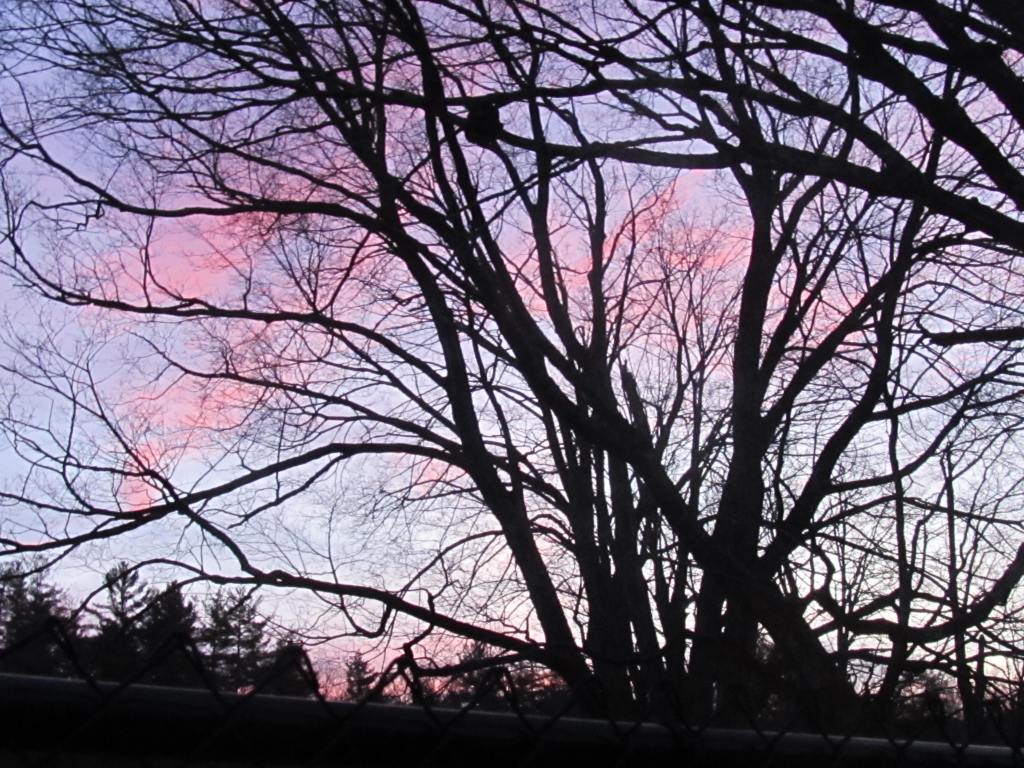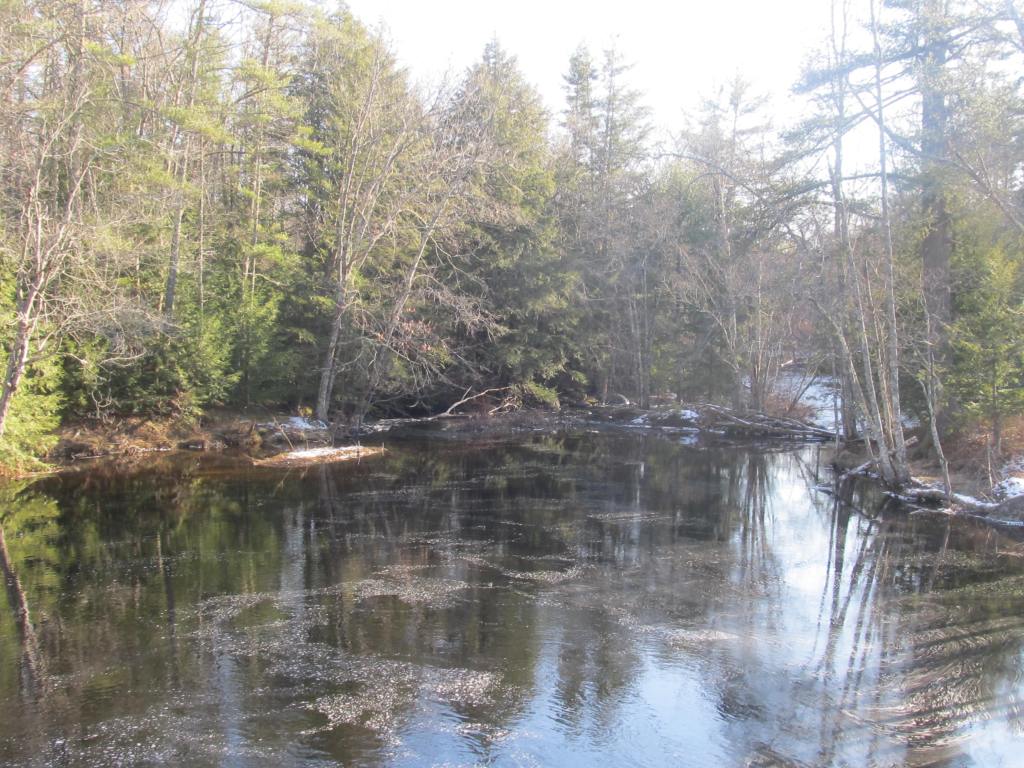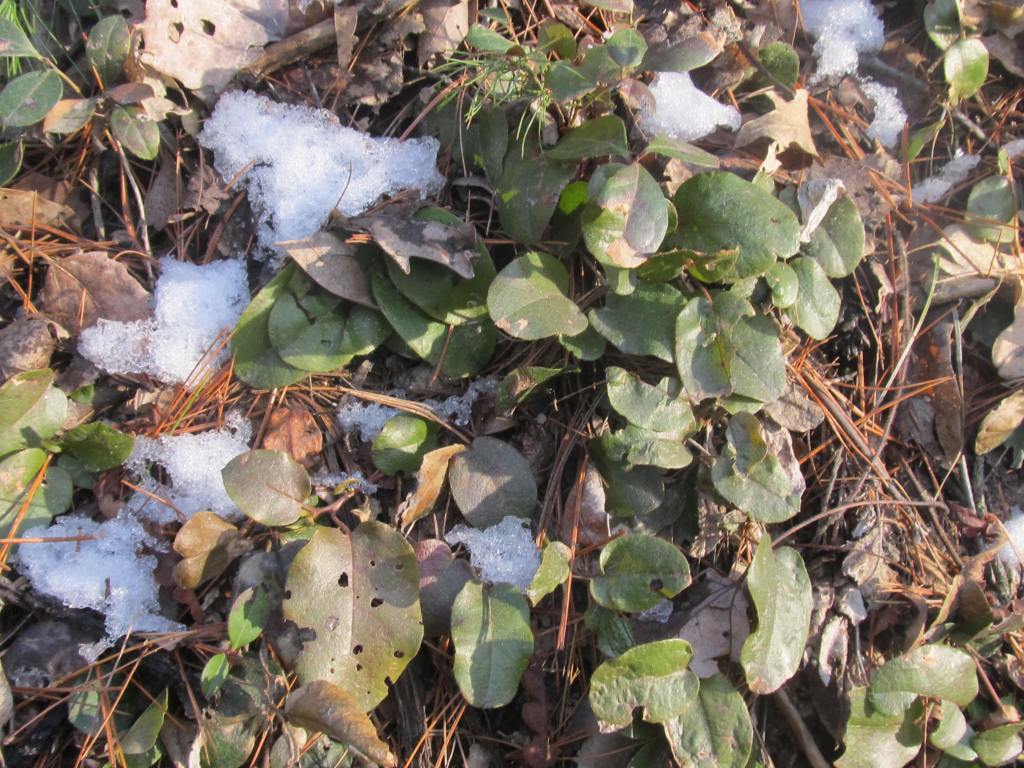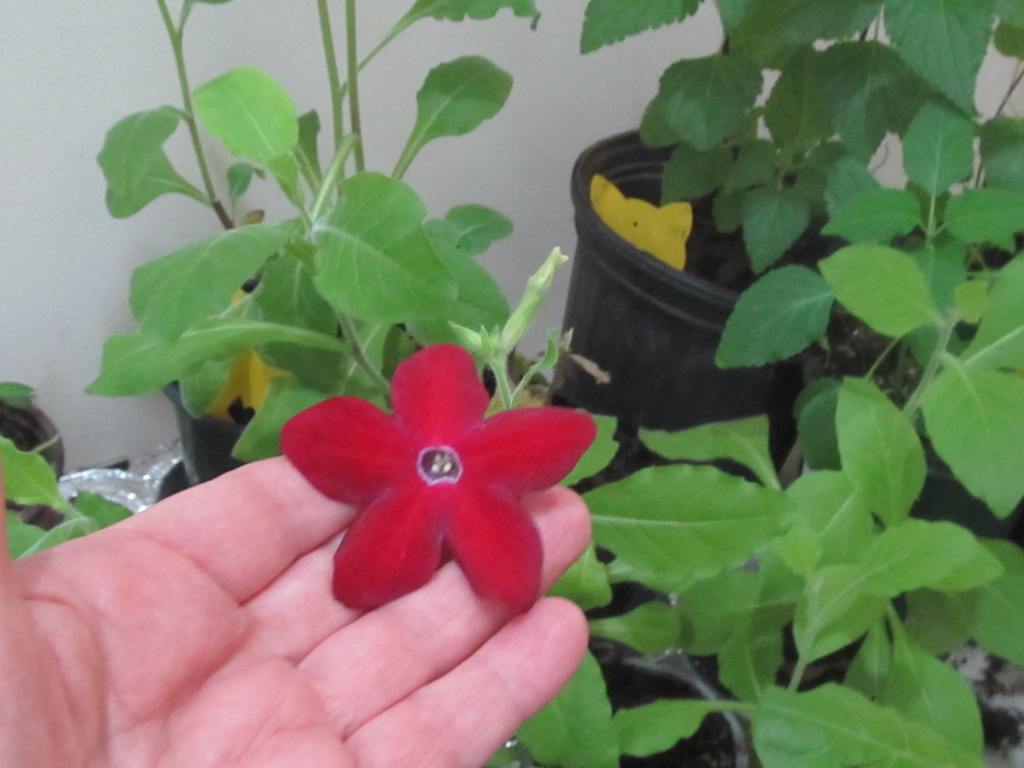I have tried repeatedly to buy this plant from Annie’s Annuals in California, but it is always sold out. It is a tall spike celosia with resplendent ruby splotched leaves and pink flowers. Since I could not find the plants, I opted for seeds, and growing it has been a trial, for New Hampshire makes it nervous.
It germinated quickly, but when it found that a 70 degree room and grow lights were the best I could offer, it sulked and stayed an inch tall for a month. I moved it into my slightly warmer kitchen and put it in a large zip plastic bag for humidity. Another two weeks and it had grown a quarter inch. I bought two heating mats and put the seedlings and the plastic bags on them. The celosias went up to two inches.
I waited for warmer weather and shuffled the plants off the mats out into the sun and back in at night. There was not much warmth in May and the celosias sat still.
Now, with tropical downpours every day and temperatures rising they are expanding and I expect them to be at 5 inches soon. I hope they reach at least six feet, for I am an optimist.
Consider “Kiss Me Over the Garden Gate”, another tall tropical annual. It was six inches tall in June but seven feet in September. Miracles can happen!
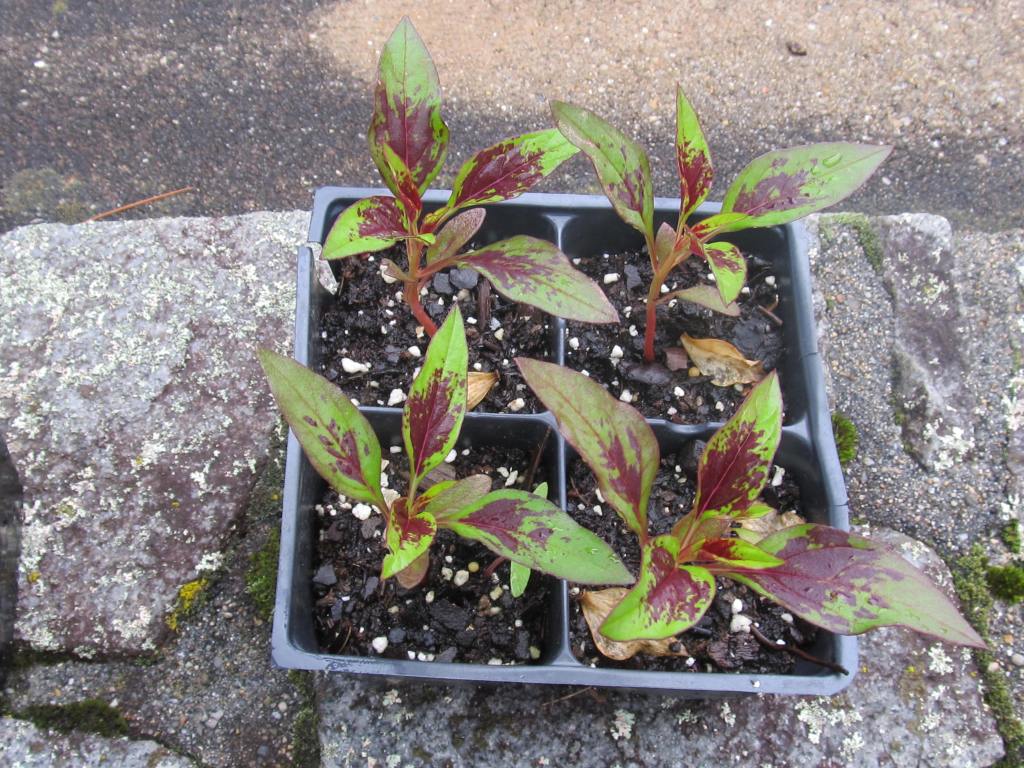

A more obliging little annual is the antique cottage garden flower “Jewels Of Opar”. It has tiny spikes of red flowers followed by little sprays of reddish berries. It self seeds some places but I am not sure it will here. Like the celosias, it seeds came from Nancy Ondra in Pennsylvania.

+++++++++++++++++++++++++++++++++++++++++++++++++++++++++++++++++
As I write this I am waiting for the annual Parade of vintage cars out of New Boston to come up the road for their 4th of July outing. Last night just after midnight the Annual “Ghost Train” went up and down the hills of the town. It came through again at 4am, and woke me up for the day-

